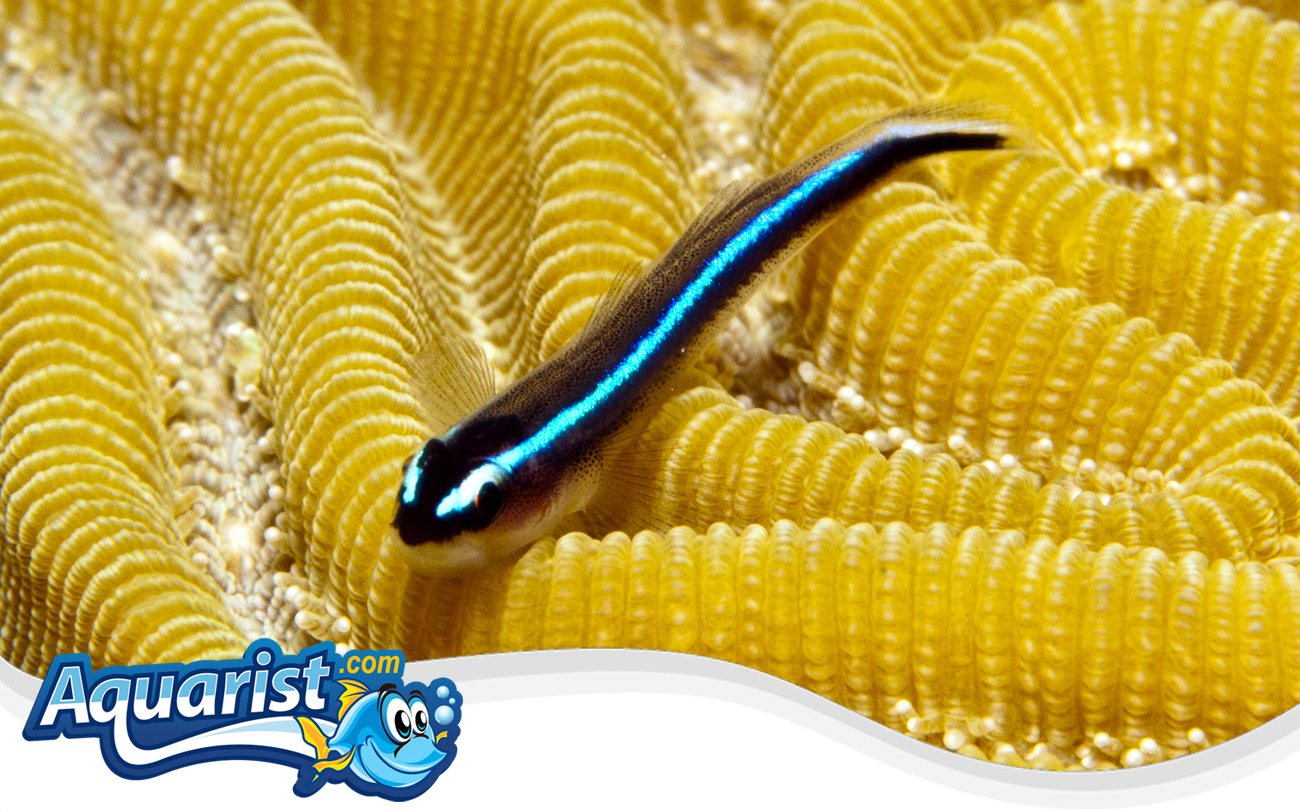Overview
- Native to the Western Atlantic, particularly the Caribbean and Florida coasts.
- Recognized for its slender body with a striking iridescent blue stripe running from snout to tail.
- Serves as a cleaner fish, removing parasites from larger marine species.
- Often seen perching on coral heads or rocks, waiting for fish to approach for cleaning.
- Popular in nano and reef aquariums due to its small size and peaceful nature.
Feeding
- Omnivorous diet, primarily feeding on plankton, parasites, and small invertebrates.
- Readily accepts frozen and live foods such as mysis shrimp, brine shrimp, and copepods.
- Can be conditioned to eat high-quality flakes and pellets in captivity.
- Frequent small feedings are recommended to maintain energy levels.
- Plays a vital role in reef tanks by helping control parasite populations.
Habitat
- Typically found in rocky reefs, coral formations, and coastal lagoons.
- Prefers small crevices and ledges as hiding spots.
- Best suited for aquariums with live rock and structured environments.
- Thrives in stable, well-maintained reef tanks with moderate water flow.
- Ideal for nano reef setups but can also be housed in larger aquariums.
Fish Care
- Optimal water temperature: 74-80°F (23-27°C).
- Ideal pH range: 8.1-8.4, with a specific gravity of 1.023-1.026.
- Resilient and adaptable but requires high water quality for long-term health.
- Generally peaceful but may become territorial towards conspecifics in small tanks.
- Regular water changes and stable conditions are essential for its well-being.
Compatibility
- Highly peaceful and compatible with most reef-safe fish.
- Pairs well with clownfish, wrasses, tangs, and other small gobies.
- Can be housed in pairs but may show aggression towards similar species in small spaces.
- Not suitable for aggressive fish that may harass or outcompete it for food.
- Completely reef-safe and poses no threat to corals or invertebrates.
Aquarium Behavior
- Frequently perches on rock ledges and coral branches.
- Actively engages in cleaning behavior by removing parasites from larger fish.
- Highly site-attached, staying within a specific territory in the tank.
- Initially shy but quickly becomes bold and interactive in a well-maintained aquarium.
- Thrives in pairs or small groups when given adequate space.


